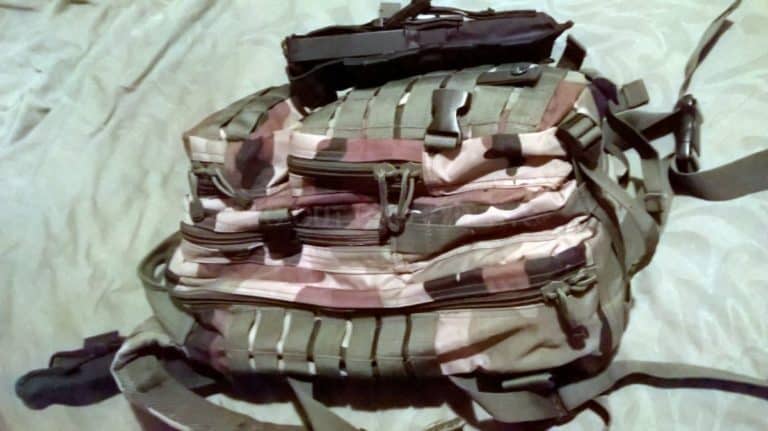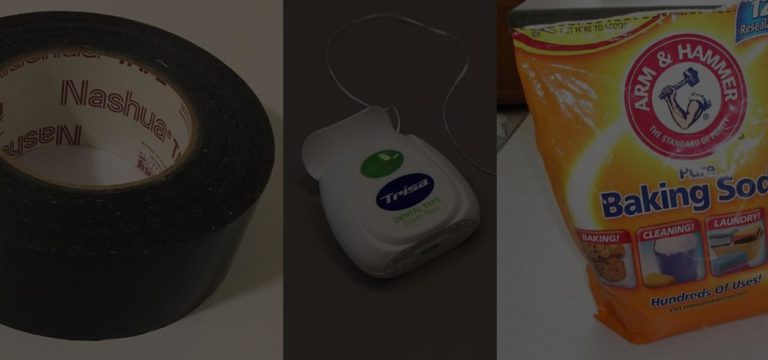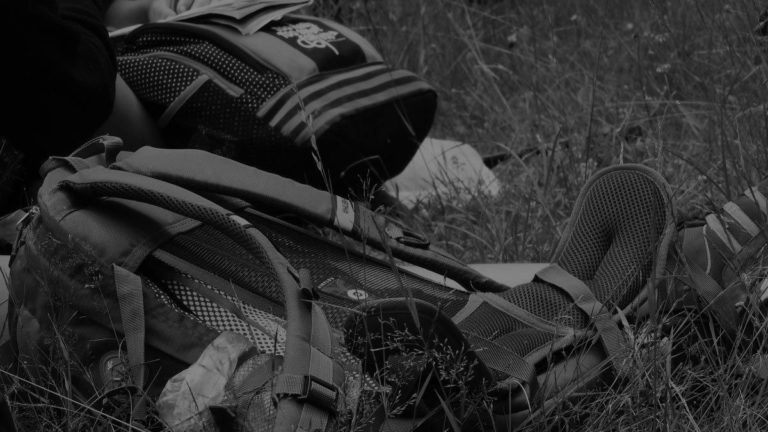How to Make Bug Out Bags for the Whole Family
If you’re anything like me, the idea of bugging out with multiple kids in tow is pretty scary. For our family, we are set up to handle short term power outages. I know that bugging out will be a last resort. And if we do need to bug out, we’ll be heading to the home of a relative who is still local but more isolated and for right now, better equipped for a long term SHTF type situation.
We don’t have far to go and plan A is to get there by vehicle but if we end up on foot because roads are impassable or too dangerous to use, our bug out bags must see us through a trip that could take several hours and if things go horribly wrong overnight.
If you’re in the processing of figuring out how to make bug out bags for the whole family, there are a number of different factors to take into account. In fact, this is where most beginning preppers make their mistake. They grab a backpack they have lying around the house or they purchase a tactical bag that a friend recommends or one they think is cool. They get the bag home and start buying gear or items from around the house and adding it to their bag. Before they know it the bag is full. They lug it to the closet or the trunk of their car, or maybe the garage and there it sits for months or sometimes years.
In this article we’ll run through what things you should consider in choosing a bug out bag as well as what to think about when packing bug out bags for each person in your family.
Things to Evaluate for Each Family Member
It’s important to do an assessment of where each person is in their prepping journey. Young children will be able to carry less weight and may have less experience with using gear. It’s important to make sure that kids are willing and able to use items in their bug out bag independently if they are separated from parents or adults in the group. Older group members or those with health or mobility issues will have different needs and may be able to carry less.
- Physical Fitness and Strength
- Personal Needs
- Maturity
- Experience
- Willingness
- Health Restrictions
- Mobility Limitations
- Ability to use Gear Safely
As you do an assessment for each person, record their height, weight, and other measurements so that you can choose the appropriate bug out bag for them to carry their gear. It’s important to start off with a BOB that is comfortable and correctly balanced for each individual to avoid discomfort, pain, and fatigue. In fact, there are a lot of factors to consider when choosing the right bug out bag for each family member.
Choosing the Right Bug Out Bag
Types of Bug Out Bags
Soccer Bag
These can be good for a child’s bug out bag because it looks like they are headed to a soccer game and not like they are carrying supplies that someone else might want. Cleat bags are relatively small and can be easily secured to the outside of an adult BOB or stored inside the adult BOB if needed.
Drawstring Gym Bag
These are generally one pocket with drawstring straps. Quality gym bags are fairly durable and somewhat weather resistant because they are made of nylon. You can further weatherproof your items by lining the gym bag with a garbage bag, using a dry bag, or protecting your items from getting damp with Ziploc bags. Again, people are used to seeing kids carrying these bags and thus they are less likely to be targeted.
Waist Pack
Waist bags also known as fanny packs can be used to carry diapering and feeding supplies for infants because they can be quickly swapped to the waist of whichever adult is carrying the infant at the time to ensure they have what they need within easy reach.
Duffel Bag
These bags can usually hold much more in volume than a traditional backpack style bag which is great if you’re loading gear into your car. But bigger isn’t always better when you are bugging out on foot. These can sometimes be more difficult to carry for long periods unless you get one with backpack straps. If you plan to use a duffel style bag for a bug out bag, make sure that it can be carried for long periods when full. Buying a large duffel bag that no one can carry may mean you have to lighten the load during your bug out by ditching valuable items on the side of the road.
Backpack
For most children, for many adults, or for anyone prepping on a budget, a traditional style backpack like a child wears to school, will suffice for a bug out bag. It’s not ideal but it will work in a pinch. In fact, older children who are already used to carrying a backpack full of books every day are probably better conditioned to carry the weight of a bug out bag than many adults. Backpack features vary widely so you’ll need to compare and determine which features are most needed for each family member.
Internal and External Frame Hiking Backpacks
If you plan to bug out alone, with very young children, or for an extended distance, you will want to consider a hiking backpack. These backpacks generally hold more volume like a duffel bag but have the straps and fit of a backpack.
For much younger children, you or your spouse may need to consider something like a combination baby carrier and backpack made for hiking. If you look for a backpack with most or all of the desired features, you can carry all your bug out gear for an extended period over just about any kind of terrain.
For more information on what features to look for and additional types of bags to consider read our article on the best survival backpacks.
What to Pack in Your Child’s Bug Out Bag
When it comes to your child you will need to personalize their bug out bag to meet their individual needs. If your child has a special toy, blanket, or favorite book that gives comfort and is part of their bedtime routine, you will want to make sure it has a special place in their bug out bag. In addition to their comfort item, here are other things to consider including:
- Flashlight to be used for lighting their way, for signaling, for comfort and even to distract an attacker by shining it in their face. Flashlights should be kept in an easy and accessible location and you should include spare batteries stored separately if the child is old enough not to put them in their mouth.
- Whistle for signaling and in case they get separated or need immediate help from an adult. This can be hung on the outside of the pack or even on a lanyard around their neck if they are old enough for that to be safe.
- Candy or treats in a Ziploc bag for a morale boost and to give them when they need to keep quiet. It’s hard to talk when your mouth is busy with a sucker or a jawbreaker.
- Trail mix or another high protein snack. Tuna in a vacuum sealed pouch and some crackers. Any food they can eat themselves if they feel hungry while walking. Include only non-perishable foods and try to make them high protein.
- Light sticks for signaling or comfort at night.
- Wet wipes or baby wipes in a small convenience pack or even a couple loose wipes in a Ziploc bag. This gives your child the ability to wash their hands or face without having to ask you for help.
- A water bottle or canteen so your child can stay hydrated during the bug out trip.
- Plastic spoons and a plastic cup or bowl to use to eat out of during the bug out trip. Most older kids can even be responsible for disposing of them properly or washing them up with a wipe and putting them back in their pack.
- N-99 masks are a critical addition to your child’s bug out bag. These can help filter the air if you run into an area that is filled with smoke, with debris, or even a chemical smell. A gas mask and suit if nuclear radiation is a possibility.
- Ear plugs are something to consider adding to your child’s bug out bag. These can be useful for younger children, so they don’t hear everything that is going on around them and get scared by loud noises or conversations they overhear from strangers. Ear plugs are also helpful, so children can sleep through the night in a strange place. Make sure you work out communication while your child is wearing ear plugs so they don’t miss vital information or directions from you while on the move.
- Games such as playing cards, flash cards, the Spot It Game, even Math Dice for those short breaks or overnight stops. For almost all situations, other than an EMP, you can include electronic devices for playing games, reading, or listening to music. These will help distract your children and keep their spirits up. Make sure to turn volume off or include headphones for times when stealth is of the essence.
- Piece of Chalk for marking trees or other landmarks if child is lost or separated from the group.
- Change of clothing (season appropriate)
- Laminated card with emergency contact information is helpful if your child is separated from the group during a natural disaster where emergency personnel or rescuers may find them. You can also choose to have your child wear an ID bracelet with this information.
- Mylar emergency blanket, bivvy, or fleece blanket for sleeping just in case your child simply needs to nap during a short stop. This can also come in handy in the event your child gets wet or cold to prevent hypothermia.
- Sawyer Mini and/or small water bottle is an absolute must for any child who can drink independently. It’s very important that your child stays hydrated during a bug out trip.
- Walkie talkie for older children to use to communicate with parents if separated
- Diapering Items (at least 24 hours’ worth) for infants/toddlers. Some parents may prefer to carry these items themselves along with a spare pacifier, formula, and a medicine dropper or syringe.
- Tracfone or old cell phone fully charged with emergency contact info and photos of family members saved on it. Can be used to dial 9-1-1 if child is separated and can also be used for rescuers to verify appropriate family members by sight.
- Something reflective on one part of the bag so child can be seen at night if needed. You may want to position the reflector on an inside flap or the backside of a backpack, so it doesn’t alert passersby when stealth is important. You can also include a chem-light on a piece of paracord or a mirror for signaling purposes. Make sure your child can use these properly.
- Ski Goggles for eye protection might be especially handy to include in your child’s bug out bag in the desert, in windy climates, or in debris filled air.
- Hand and Foot warmers, gloves, wool socks (seasonal) will be critical resources in colder seasons or in wet or cold climates.
- Coloring Book and Crayons stored in a Ziploc bag can be especially useful for younger children and even some older kids. Coloring can be distracting, it can help kids to calm down, etc.
- Cash for older children just in case they are separated from the group or in case packs of adults are lost or stolen.
- A map of the area is always helpful, especially for older children who get separated or in case adult packs are stolen or lost.
Obviously, you’ll want to adjust the above list to meet the age, experience, and needs of your child. For most children elementary school age to middle school, around five pounds of weight is a good goal. Children ages 12 and up should be able to carry more than five pounds of weight and pretty much all of their own gear, provided you purchase them a hiking style backpack with a frame that fits their body.
Adult Bug Out Bags Can Include:
Food & Water Supplies
- Protein bars
- Mountain House Food
- Water Bladder
- Sawyer Mini Water Filter
- Canteen
- Titanium or Stainless-Steel Cup or Container
- Titanium spork
- Snares for catching small game
- Mini fishing kit
Shelter/Warmth and Fire
- Simple stove (Es-bit) and fuel
- Wetfire
- Storm proof matches
- Flint and steel
- Emergency mylar blanket
- Pro-Fly Rain Tarp
- Stainless Steel container and cup
- ENO double hammock
- Mylar blanket
- Poncho or other rain gear (many can double as a shelter)
- Thermal wear
- Wool cap
Signaling and Navigation Supplies
- Compass
- 2-way radio
- Head lamp and spare batteries
- Whistle
- Chem light/Glow Stick
- Trail Flagging/Marking tape
- Flashlight
Multi-Use Items
- Bandana
- Mechanics gloves
- Multi Tool
- Duct tape
- Notebook and Pen
- Shemagh
- Feminine hygiene products (diva cup)
- Paracord
- Carabiners
- USB drives with important documents and/or information
- Crazy Glue
- Water purification tablets
- Sewing Kit
- Spare clothing, especially wool socks, sturdy shoes
- Survival knife (K-Bar)
- Folding saw or hatchet
- Emergency sleeping bivvy
- Tent stakes
- Hand crank, solar powered flashlight which has cell phone charger
- SAS Survival Guide (in print or on cell phone)
- Zip ties
See some of the uses of these multi-use items here.
Medical and First Aid Supplies
- N-99 mask
- TP
- Antibacterial wipes
- Safety Goggles/Extra glasses
- Tourniquet
- A larger first aid kit including
- Moleskin bandages
You can see more BOB essentials here.
How Long Does Bugging Out Take with a Family?
Calculating how long it will take to bug out with your whole family is difficult. Every family is different and every individual in each family has different needs, pace, and factors that impact mobility. According to Naismith’s rule, a calculation developed in the late 1800’s by a hiker from Sweden, the average person wearing a full pack should plan for 30 minutes to 1 mile of distance and 1 hour per 1,000 feet of ascent.
So, if you’re traveling 10 miles on a relatively even road or trail with little to no ascent, you can expect it to take a minimum of 5 hours and that’s not taking into account any breaks at all. Those of you with a family know that you’re going to have to break multiple times in an hour. The younger the children or the more mobility limitations of your group members, the more breaks you will have to take.
For any bug out routes that require ascent, the calculation includes 60 minutes for each 2000 feet ascent. So, if you are traveling that same 10 miles but there is an ascent of say 700 feet, the formula would be (30 minutes x 10 miles) + (700 ft /1000 ft) *60 minutes = 342 minutes or 5 ¾ hours without any breaks.
When considering how long a bug out trip will take for your entire family always estimate based on the pace and fitness level or other needs of the slowest/most vulnerable family member. Calculate the amount of time it would take an average person (Naismith’s rule) and then adjust for breaks as frequently as needed for your vulnerable group members. When traveling with small children who move slow and need frequent breaks, it could easily take you double the amount of time indicated by Naismith’s rule.
Consider Other Children’s Gear
An Angler’s vest like is normally used for fisherman, will distribute the weight of items more evenly and may be easier for your child to carry for long periods of time. Tactical style vests can be reinforced with Kevlar for added protection for yourself and your children. A foldable wagon with good sturdy wheels might be a good thing to have in the trunk of your car when you bug out in your car. If you are stranded and must leave your vehicle and set out on foot, you can let children or even just their bug out bags ride in the wagon to ease strain and fatigue that will occur when kids carry their own bags or walk the entire way.
What kind of bug out bag are you using for yourself? How does it differ from your spouse’s bag or your children’s bug out bags? Did we miss something you think is critical when making bug out bags for the whole family? Let us know below in the comments.





